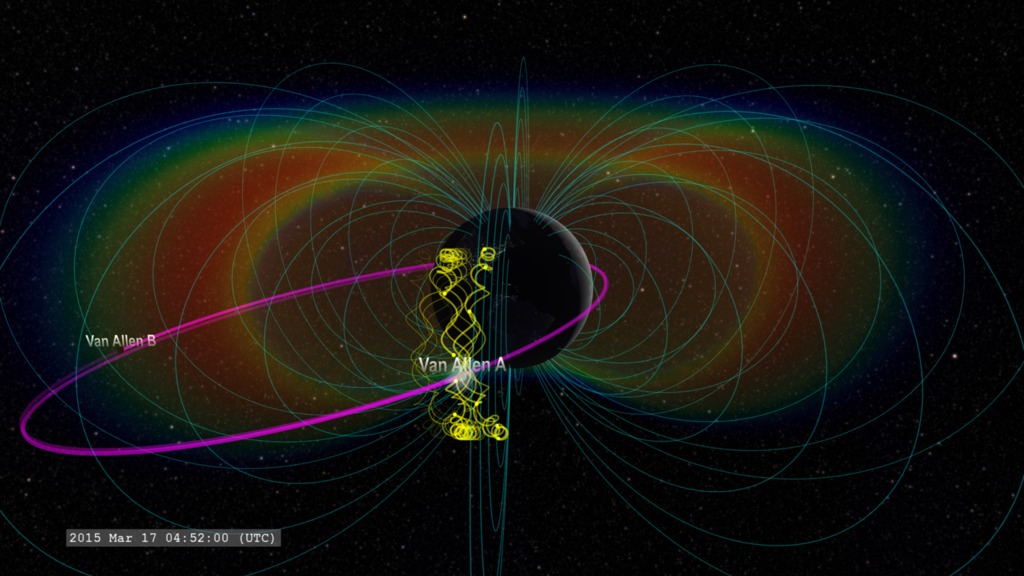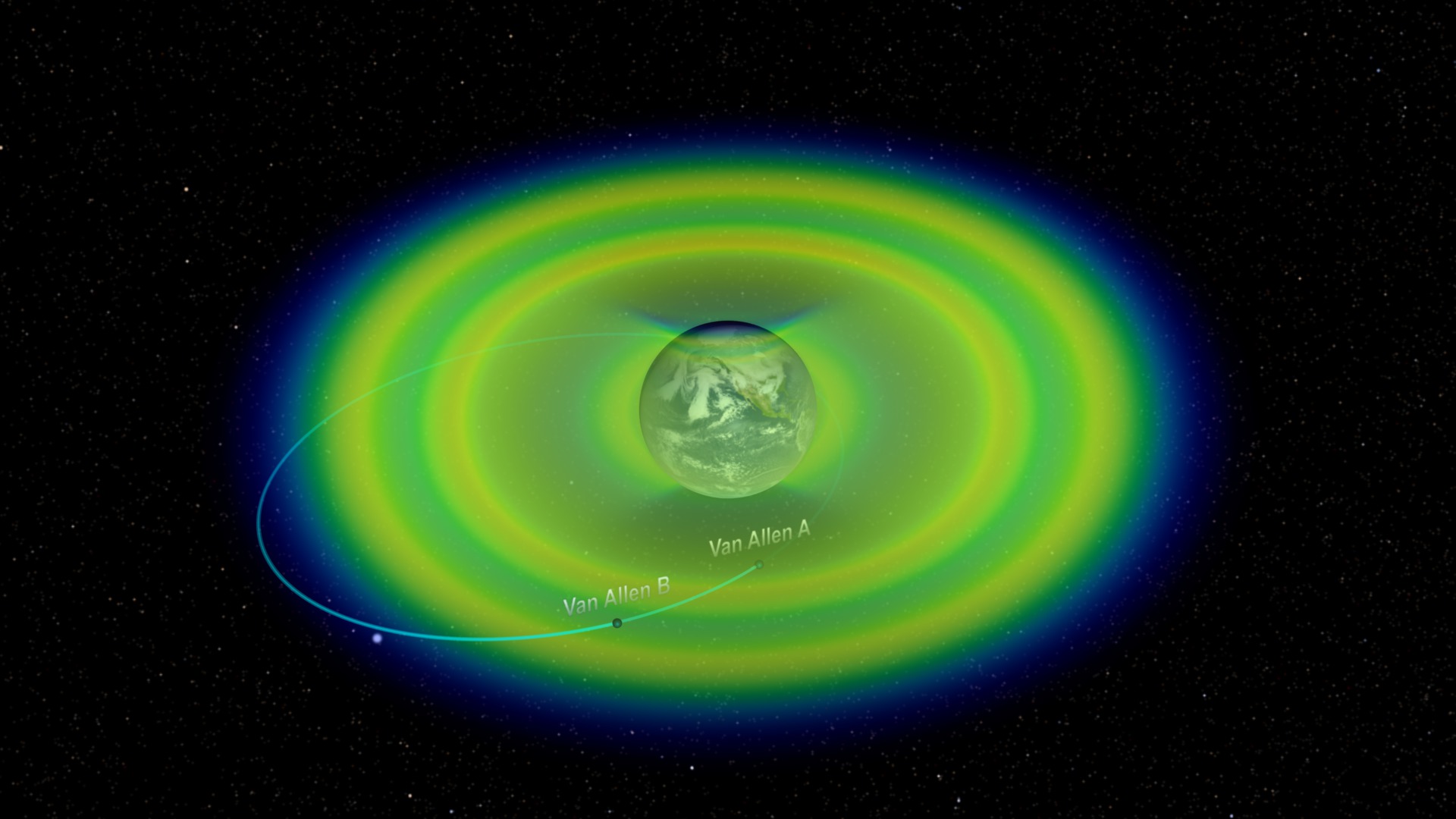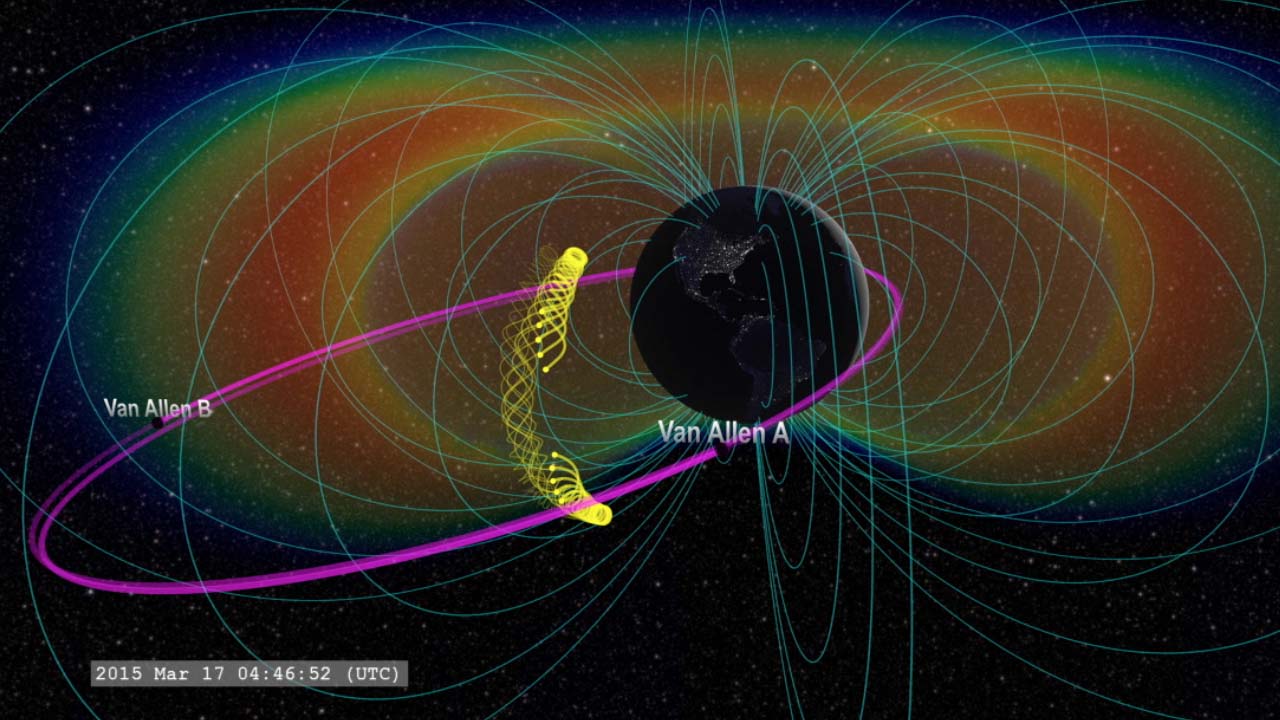Leaky Radiation Belts
This visualization opens with a full view of the radiation belt of trapped electrons circling Earth. We open a slice of the belts, to display a cross-section for clarity and move the camera to a more equatorial view. Earth rotation and solar motion have been turned off for this visualization to reduce distracting additional motions.
Since their discovery at the dawn of the Space Age, Earth's radiation belts continue to reveal new complex structures and behaviors.
During a particularly intense event in late June 2015, the inner edge of the region of trapped electrons moved closer to Earth. The electrons of interest had energies in excess of a million electron volts (Wikipedia). As the region retreated outward, it left behind a population of high-energy electrons forming another radiation belt inside the L=2 shell (The 'L-shell' value identifies a field line in a magnetic dipole. The numerical value corresponds to the furthest distance from Earth in Earth radii, in this case two Earth radii). This flux of high-energy electrons persisted considerably longer than expected, the relativistic electrons slowly leaking away. It took over a year for the relativistic electron flux in the belt to decline below the level of detectability for the instruments on the Van Allen Probes.
The 3-dimensional radiation belt model in the visualizations above was constructed by propagating electron flux measurements, corresponding to a given time and distance from Earth measured by the Van Allen Probes, along a 3-dimensional structure of magnetic dipole field lines.
Credits
Please give credit for this item to:
NASA's Scientific Visualization Studio
-
Visualizer
- Tom Bridgman (Global Science and Technology, Inc.)
-
Scientist
- Seth Claudepierre (The Aerospace Corporation)
-
Writer
- Mara Johnson-Groh (Wyle Information Systems)
-
Producer
- Genna Duberstein (USRA)
-
Technical support
- Ian Jones (ADNET Systems, Inc.)
- Laurence Schuler (ADNET Systems, Inc.)
Release date
This page was originally published on Wednesday, March 15, 2017.
This page was last updated on Sunday, January 5, 2025 at 11:17 PM EST.
Missions
This page is related to the following missions:Datasets used
-
ECT [Van Allen Probes: Energetic Particle, Composition, and Thermal Plasma Suite]
ID: 828
Note: While we identify the data sets used on this page, we do not store any further details, nor the data sets themselves on our site.


![Music: "Now We Wait" by Kamal David Kamruddin [PRS]This video can be freely shared and downloaded. While the video in its entirety can be shared without permission, some individual imagery provided by pond5.com and Artbeats is obtained through permission and may not be excised or remixed in other products. Specific details on stock footage may be found here. For more information on NASA’s media guidelines, visit https://www.nasa.gov/multimedia/guidelines/index.html.Complete transcript available.](/vis/a010000/a013600/a013688/South_Atlantic_Anomaly_Still_2.jpg)
